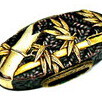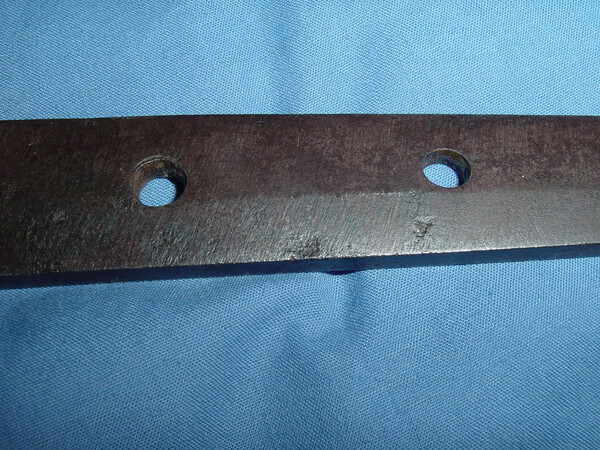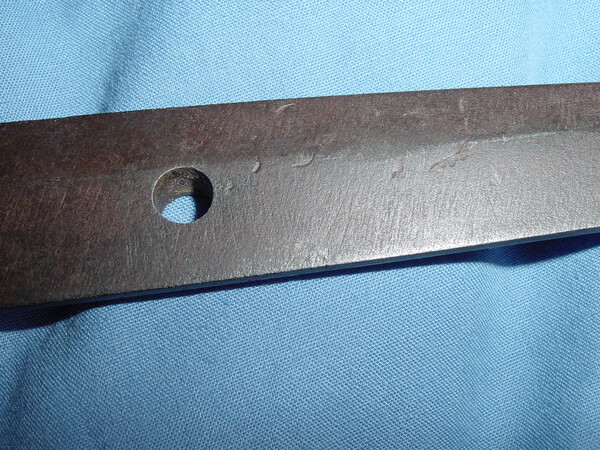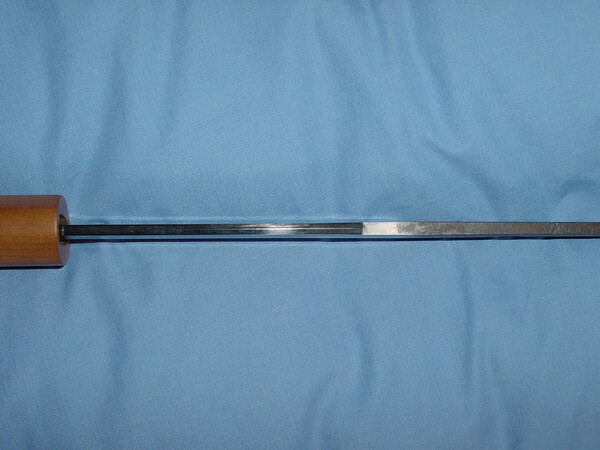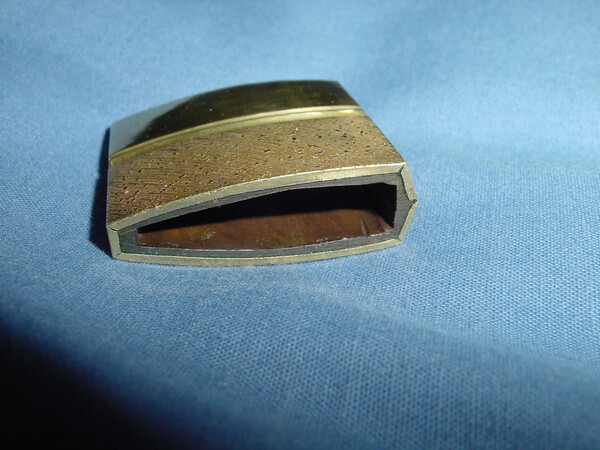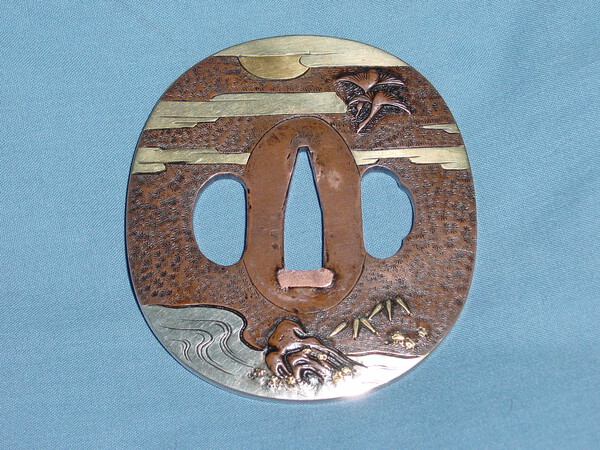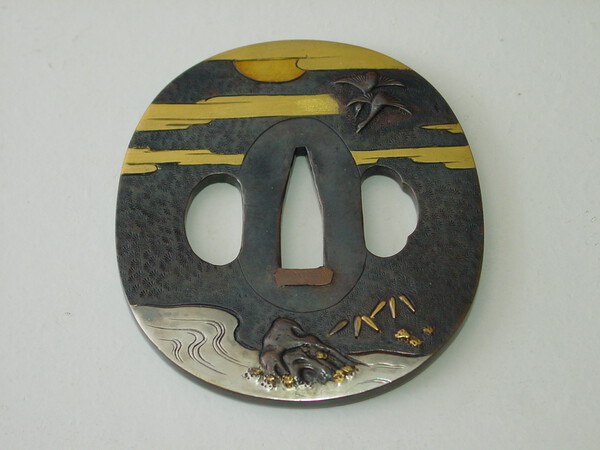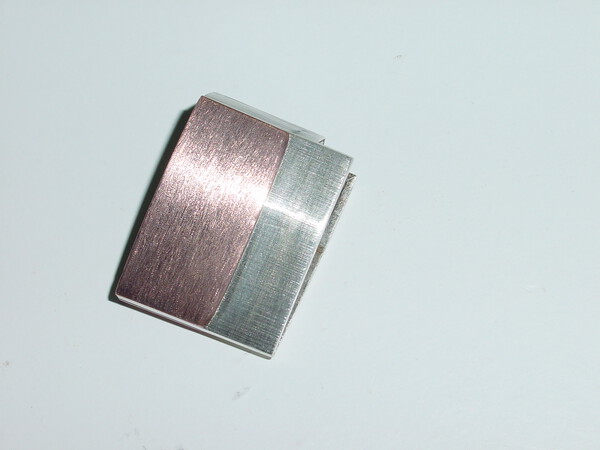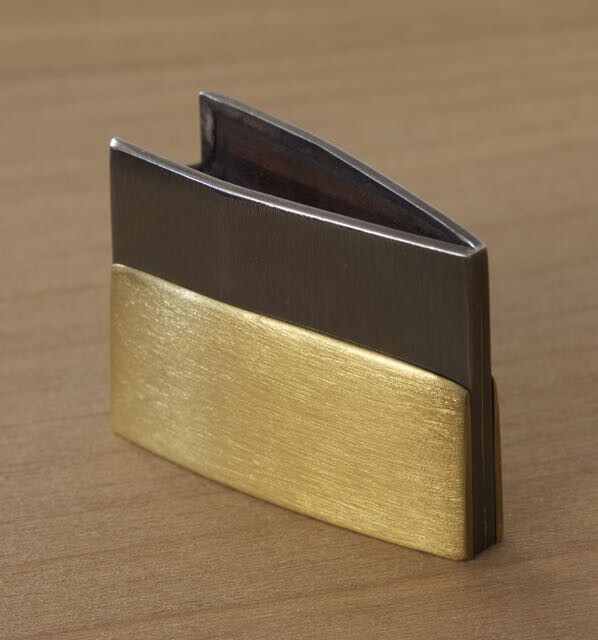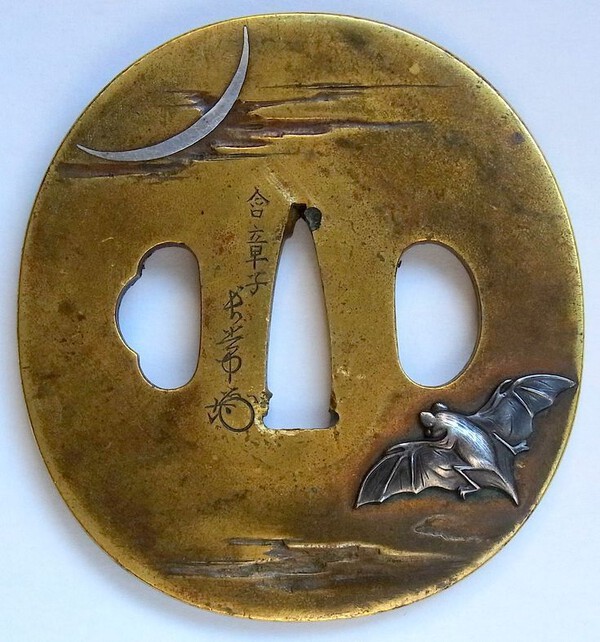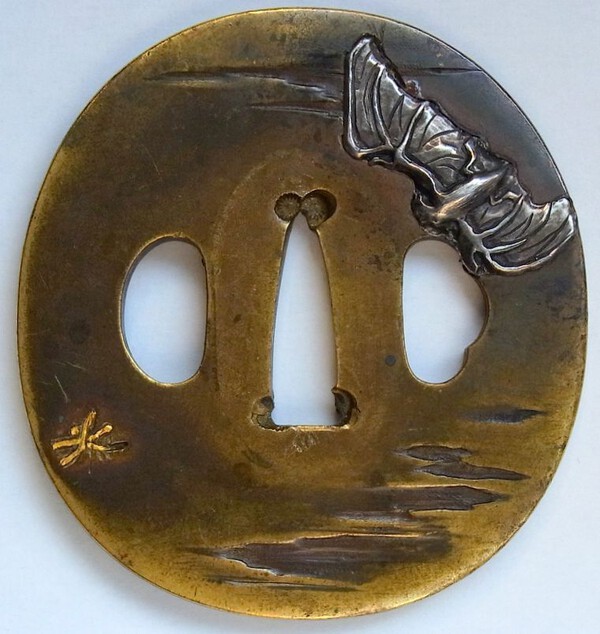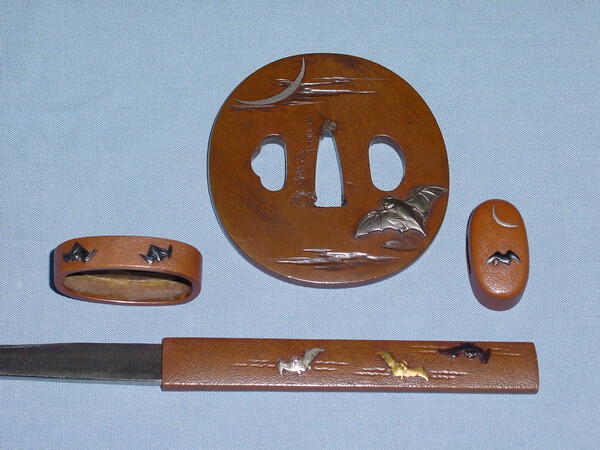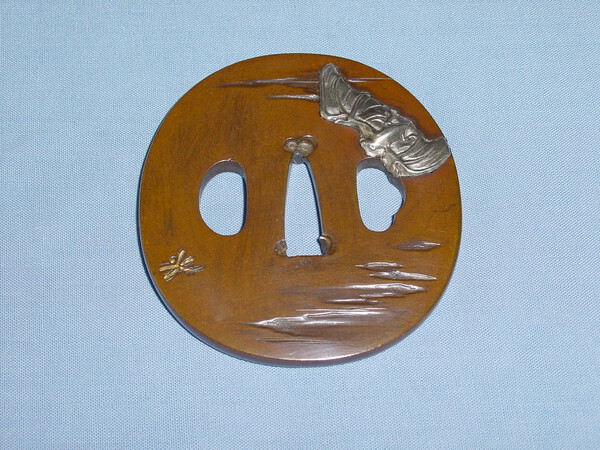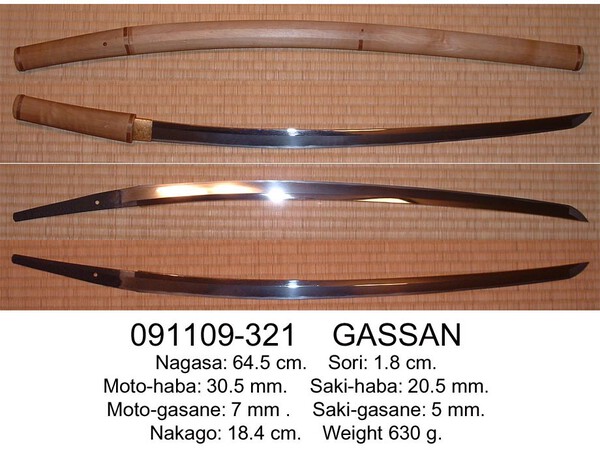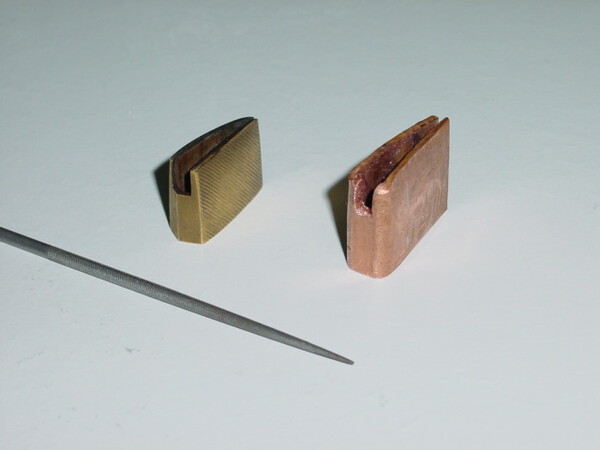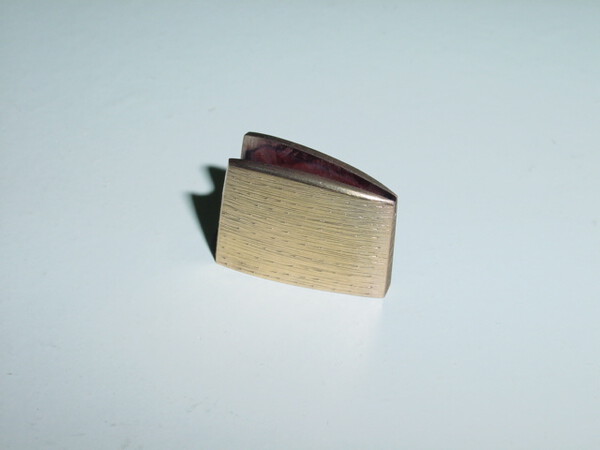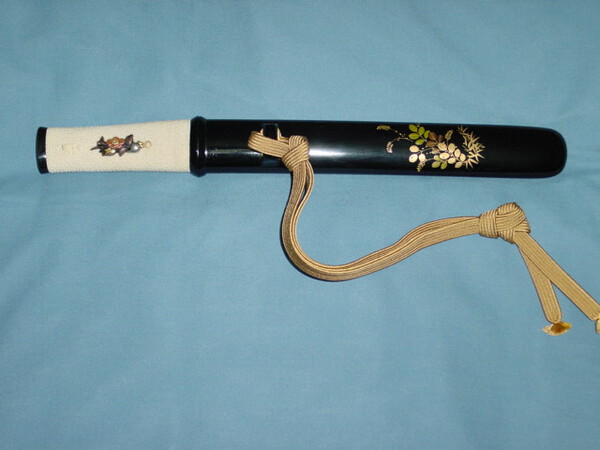-
Posts
24 -
Joined
-
Last visited
Content Type
Profiles
Forums
Events
Store
Downloads
Gallery
Everything posted by Nobutaka
-
I'm willing to pay the airmail costs to the USA but the responsibility of importing it would be yours.
-
Just the export certificate from Japan. Price reduced to £1100 and I will pay the postage to any mainland UK address.
-
Price reduced to £375.00, I'll pay postage to anywhere in the mainland UK.
-
Thanks Barry. Over to you Jesse. I'm willing to post it if you take any risk whether it exists or not.
-
I have for sale an Edo period mumei katana in shira saya. The blade is in good Japanese polish. There is a light patch of stabilised rust pitting on the mune near the habaki, see photo, and no fatal flaws. Suguha hamon and there is a kaeri of the hamon at the boshi towards the mune. Elegant balanced overall shape and lovely ko-itame hada. Nice gilded copper habaki. The shira saya is fitted with hatome. Comes with photocopy of export certificate. Blade full length 78.0 cm Nagasa 62.7 cm Sori 1.3 cm Motohaba 2.9 cm Motogasane 0.65 cm Overall length of shira saya 90 cm I imported this katana myself directly from Japan. Asking £1400 or close offer.
-
I have shipped katana to Japan in the recent past for restoration but I don't know if it would be allowed to enter the US due to your import regulations. It's perfectly feasible that it would be returned to me.
-
I have a mumei tanto for sale in shira saya. Blade is out of polish, some small forging inclusions, but no fatal flaws. Suguha hamon and I can see a faint kaeri or turnback of the hamon at the boshi towards the mune. Nice copper habaki. Nagasa 17.1 cm Motohaba 2.3 cm Motogasane 0.35 cm I’m asking £425 for the tanto, close offers considered, and I will pay the postage to anywhere in the mainland UK. Thanks Vaughan
-
Once again I'm indebted to everyone who has replied. I don't think the nakago has helped in dating the blade due to the (obliterated?) mei. Thanks too for the comments about the blade and shirasaya. At least I know this is not an o-suriage tachi despite (deceitful?) attempts to indicate such. It is razor sharp - I have accidentally nicked my fingers several times when cleaning it, and I'm usually careful. Its easy to spruce up shirasaya if you have a kettle. When I received this sword the shirasaya had several bumps and dents in it, so I removed the blade and moved the shirasaya back and forth over a steaming kettle (with gloves on) to raise the bumps and dents, followed by gentle sanding with successively finer grades of sandpaper over a wooden sanding block finishing with vigorous polishing with a soft dusting cloth. Thanks again.
-
Can anyone shed some light on the original finish of Kai Gunto hangers? I always assumed they were entirely gilded but found a hanger of my genuine Kai Gunto had had some gold paint on it. The paint had covered the silver base metal shown in the photo near the attachment point of the ring. The paint came off when I was cleaning the hanger. I'm not sure if the hanger is painted or gilded, but if painted it looks just like gilt, it is very well done. I am pretty sure the ring and its ferrule are brass. Maybe the entire hanger (apart from the ring and ferrule) was made of silver metal and then painted? Does anyone know? Thanks!
-
Hi Mark, For polishing, try: John Bolton 0151-625-7971 or Les Stewart lesstewart@btinternet.com John was thinking of retiring when I last spoke to him a few months ago. He has done several tanto for me and I've always been delighted with his work. His pricing is relatively cheap and his turnaround is impressive. Like about a week! I've not used Les, who has a very good reputation and I've been told is Japanese trained. His waiting time is around 9 months and expect to pay £500-£700 for polishing a katana. If your blade is arsenal made then I would suggest using John if he is still working. John is based on Merseyside and Les in Scotland.
-
Geraint, I would have really liked to have given him the benefit of the doubt. But I emailed him several times and all were ignored. It was only after waiting a month when I finally raised a Paypal claim for the full amount of £67 that he replied for the first time in the claim page, quoting problems with his emails. He even said he'd previously sent the entire order.... which I never received, and if it was indeed sent, why wasn't it sent signed for or tracked? After I raised the Paypal claim, he decided to send me £10 worth of my order items but strangely not the rest. I never heard from him again. The £10 worth of items were not sent tracked or signed for. Paypal decided the claim in my favour. There really didn't seem to be much concern on his part about letting me down.
-
I was wondering if anyone has had any issues dealing with UK Seller Ryujin Swords. I placed an online order with them in the last week of August this year. After waiting over a month I had only a small part of the order finally delivered and only one response to my emails. I hope there is nothing serious going on in this regard.
-
Holding the blade in my hand, I'm struck by the yasurime; worn down. I'm also struck by the blackness of the patina on the nakago. If it were shinshinto, could what I see on the nakago be the product of only 250 or so years? Unfortunately, I'm not knowledgeable enough to answer my own question, let alone the evidence of the shape of the hamon and kissaki. I posted more high res photos of the nakago yesterday and hopefully others will have a better idea from them.
-
Just added my signature. Sorry!
-
Once again, thanks for your help and opinions - they are greatly appreciated. I had no idea this would generate such a lot of discussion. I've attached some better photos of the nakago ana's and habaki. One photo shows the obliterated mei, looks like a small rounded punch was used. As far as the width of the blade compared to that of the nakago, it has probably been polished a couple of times.
-
I'm hugely indebted to everyone for their opinions - and glad it has been of interest. Here are the dimensions which I apologise for not including in my original post: Nagasa: 68.2 cm. Sori: 1.3 cm. Moto-haba: 30.5 mm. Saki-haba: 22 mm. Moto-gasane: 6 mm+. Saki-gasane: 4 mm. Nakago: 18.9 cm. Weight: 632 g. The polish is old but good. If it was gimei what would be the likely reasons for obliterating it?
-
Here's some before/after photos of work that Ford has done for me over the years, for which I am eternally grateful. We are indeed lucky to have this world class artisan to help us. (I used Tamiya masking tape to firmly secure the kogatana in the kozuka, easy to use and easy to remove without leaving any residue).
-
Hello everyone, I'd be grateful for any information or views about my O-kissaki katana. For example, is it likely koto or shinto, is it likely the mei was obliterated and the nakago shortened to make it seem like an o-suriage tachi? Thanks.
-
Hi Justin, I found your thread and thought you might be interested to see my own Koto Gassan. It is signed 'Gassan saku' and has ayasugi hada as well. I acquired it in 2009 and purchased it from a Japanese dealer. I'll try to post a decent photo of the hada at a later date. Vaughan
-
Thanks guys, I really appreciate your comments and I was especially interested in the brass plating instructions. I made sure that the copper strip I used for the machigane was firmly held by the sides of the habaki and I had to be careful not to jolt it before it was soldered, quite a nerve wracking couple of minutes. I put a couple of drops of Bakers soldering fluid into the join and put a piece of fluxed solder over the join inside the habaki and held it over one of the burners of the kitchen cooking stove. The solder used was Brownells Hi Force 44 which melts at about 475 deg F (264 deg C) which is low, and it flowed easily and quickly into the join without fuss. I didn't want to push my luck with a silver solder, not having had any experience of silver soldering. The gilt took to the solder I used, and coloured it the same as the copper and it became invisible. Vaughan
-
Here's my first post, and my first attempt at making a habaki for my aikuchi. I followed the instructions in the book "Craft of the Japanese Sword". I used 3mm copper sheet hammered on a newly-acquired anvil with a wedge hammer. I only hit my thumb once but stabbed my finger twice with a rat-tail file. The workpiece was annealed at three stages. The machigane was secured with silver/tin solder. I used a stationary rotary disc sander to rough the final shape after which a series of flat steel diamond knife sharpeners were used wet to get the surfaces true. Then final finish with automotive sanding blocks. Gilt nego gaki finish courtesy of Richard Adams. Vaughan


